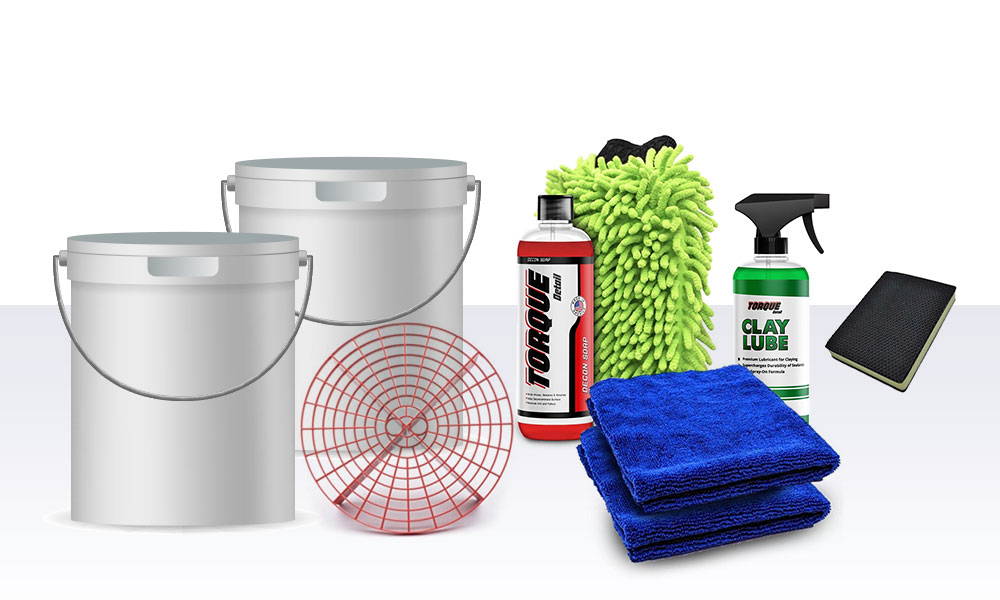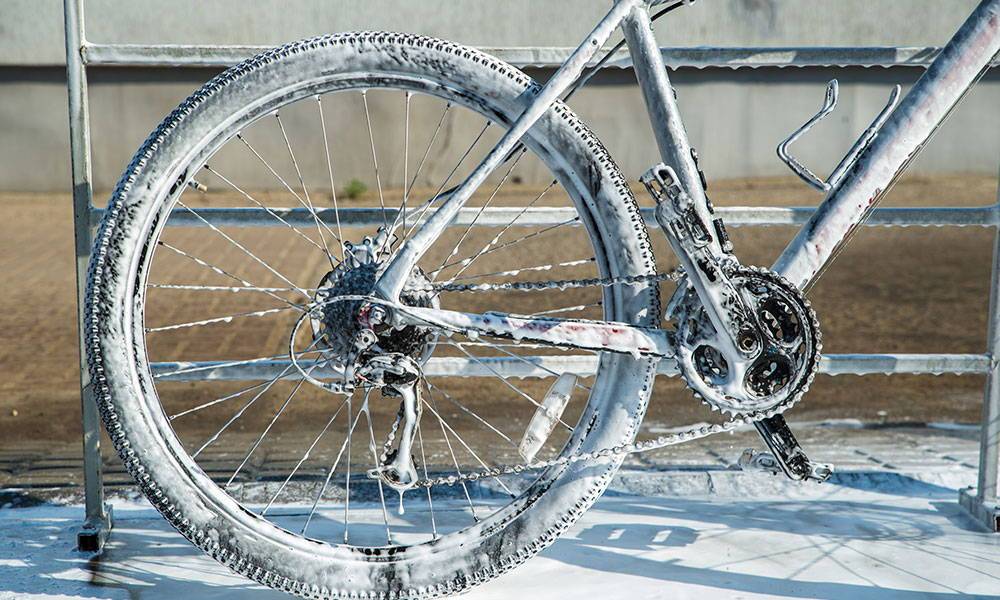When you take a car to be detailed, the options can be confusing. You’ve got glazes, waxes, polishes, and other finishes that all sound like different words for the same thing. In fact, there are important differences between all of these products.
Not only that, but many detailing shops use products that are years or decades out of date. Here’s what car glaze is, how it works, and some modern alternatives you can use instead.
★★★★★ "My car is slick as glass!! I put the Ceramic Spray on my Corvette Stingray and it is very slick and shiny. I should have purchased it sooner. It is a great product. It made my wheels look new. Keeps off dirt and dust." - Charlie F.
What Is Car Glaze?
Car glaze is a finish that’s applied to your car during detailing. The exact chemical composition varies depending on the manufacturer, and there’s no single component that defines a glaze. Instead, glazes are a complete class of products with a variety of chemical compositions. What ties them together is their purpose.
A glaze is designed specifically to fill in scratches in the paint. We’re not talking about full-on, your-car-just-got-keyed scratches. We’re talking about small cavities and micro-scratches that can ruin your car’s appearance, dulling the finish and making your car look drab and boring.
By filling in micro-scratches and cavities, car glaze restores the original shine and reflective finish you see on a brand new car.
Car Glaze vs. Wax
Glaze is often confused with car wax, and it’s easy to understand why. Both are applied during detailing, and both help to restore your car’s finish. However, the two are fundamentally different.
While car glaze will make your car shiny again, it is not very durable. Without protection, it won’t last very long. Wax, on the other hand, is designed to protect your car. It will add a bit of shine when you buff it out, but it dulls fairly quickly.
As you may have guessed, the two work best when used in combination. Apply a glaze first to restore the shine, then apply a wax to protect the glaze. This will give you the benefits of both.
Car Glaze vs. Polish
A polish is an abrasive material that’s used to eliminate swirl marks and other larger imperfections. The most abrasive polishes are called compounds, and are used between paint coats when repainting a car. Compound is also typically applied on the last coat before finishing with a lighter polish.
Glaze can also be used to hide larger imperfections, but it’s only a temporary solution. It also can’t be applied between coats, since the next coat of paint wouldn’t adhere over the glaze. That said, glaze is suitable for use on a regular basis, whereas polish is only advisable for fixing more severe damage.
So, When And How Do You Apply A Car Glaze?
The how of applying a car glaze is simple. As Mister Miyagi said, “wax on, wax off.” Apply it liberally in a circular motion, then follow up in a similar motion until any residue is removed. When you’re finished, the car should have a rich, mirror-like sheen, almost as if it’s wet. Make sure to use a clean, lint-free cloth, or you may end up doing more damage than you repair.
The when of applying a car glaze is a bit more complicated. Obviously, it’s a good idea to apply before car shows or any time you want to show off your vehicle. If possible, wait until right up to the day of the show or apply the glaze the night before. That way, there will be minimal opportunity for the glaze to get damaged.
You also want to apply your glaze in a climate-controlled environment. If there’s dust, moisture, or other junk in the air, it’s going to negatively affect the quality of your finish.
One time you never want to apply a glaze is on a fresh coat of paint. The same goes for wax, which is why body shops don’t apply glaze or wax after performing a repair. Car paint takes up to three months to fully cure (depending on the kind of paint) and needs to be exposed to the air during this time. For the same reason, you don’t want to take a freshly-painted car through a car wash. After three months, it will be safe to wash, glaze, and/or wax.
In many cases, auto detailers also will not use glaze, instead opting for a sealant or wax/sealant hybrid. This is because sealants are more durable, as we’re about to see.
The Best Solution In 2020 Is Not Car Glaze
So, what types of waxes, sealants, or other products should you be looking at? We’re about to discuss modern synthetic sealants, as well as ceramic-based sealants.
The Short Version: Our Alternatives to Car Glaze:
Mirror Shine: This is the product we recommend to most people. It’s a hybrid wax and sealant product, meaning that it provides great shine like any other wax product with the benefits of the protection properties of a sealant. It lasts up to 6 months.
Ceramic Spray: This is our best ceramic coating product. It brings out an incredible shine in your paint and offers up to a year of protection.
Shine and Reflection
★★★★★ "My car is slick as glass!! I put the Ceramic Spray on my Corvette Stingray and it is very slick and shiny. I should have purchased it sooner. It is a great product. It made my wheels look new. Keeps off dirt and dust." - Charlie F.
Modern spray-on coatings can offer equal or better shine than glaze. To be fair, a lot depends on the individual product. Many so-called ceramic coatings actually have a silicone base, which doesn’t have the same gloss as a true ceramic coating. In that case, glaze is still going to outperform your spray.
However, there are excellent, true ceramic coatings out there like Torque Detail Ceramic Coating, which provides top-tier shine - even better than you’ll get with a traditional glaze. Not only that, but a high-quality ceramic coating requires no wax for protection. It’s already durable enough to stand up to the elements on its own.
Recommended:
Paint Protection
As we mentioned already, glaze offers no protection for your car’s paint job. It merely fills in imperfections and adds shine. This means it’s not an effective one-step treatment. You need to apply a wax afterward, which adds an extra step and also costs money for extra supplies.
An easier way to do things is to use an all-in-one product like Torque Detail Mirror Shine. This is a hybrid spray that includes both a sealant and a wax. The sealant will fill in any grooves, while the wax will provide instant protection. To apply, just spray it onto your car, buff it with a cloth, and rinse off.
Similarly, as we’ve already mentioned, ceramic coats provide superior protection. As a matter of fact, pretty much any modern spray-on finish is going to be more durable than glaze.
Hydrophobic Properties
Just as glaze won’t protect your car from dirt, sun, or abrasion, it also won’t protect it from water. If one of those tiny scratches or dings goes all the way down to the metal, you can end up with rust or pitting. All of a sudden, a minor cosmetic issue can become a major problem requiring a trip to the body shop.
Once again, a modern sealant will offer superior protection, without the need for a wax coat. Keep in mind that different types of sealants have different levels of water protection. For example, a wax and sealant hybrid treatment will offer better protection than ceramic.
Longevity
As we mentioned at the outset, the main drawback of car glaze is that it doesn’t last terribly long. This isn’t a big deal for short-term use. If you’re prepping a classic car for the annual show, you won’t mind reapplying the glaze again a year later.
That said, if you’re washing your daily driver, glaze can get frustrating over the long term. You end up needing to apply it every week or two, which is annoying to say the least. Not only that, but despite its low price, glaze can get pricey over time due to the frequency of applications. A modern sealant costs more at the outset, but you save money over time because you don’t need to use it often.
Bottom Line
As you can see, there are a number of ways you can bring back your car’s shine and protect it from the elements. Much of the choice comes down to a matter of preference - how much shine you want, how much you want to spend, and how much time you have to spend on detailing your car.
That said, there are some definite advantages to using more modern products. The application process, quality of protection, and hydrophobic qualities are all superior to glaze alone, so you don’t have to worry as much about waxing. Moreover, the long-lasting durability of these finishes far outperforms both glaze and traditional wax.
Modern finishes also have their own significant variations. For instance, we mentioned that a hybrid wax sealant offers better water protection than a ceramic coating. However, ceramic coatings are more abrasion-resistant and provide superior shine. There’s no universal right or wrong choice here. It depends on how you drive your vehicle and the conditions under which you do so.
Of course, finish restoration is only part of detailing your car. Torque Detail produces a variety of car-care products for all of your cleaning and detailing needs. If you like what you’ve learned about the Mirror Shine and Ceramic Coating, you’ll love all of our other offerings.







